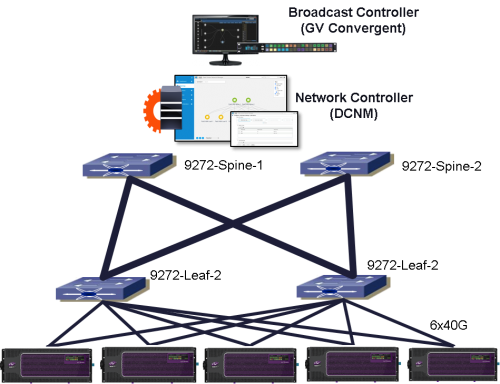
Cisco in Production
Cisco is helping to transform another industry with IP, this time setting its sights on the production facilities used by broadcasters.
Looking around broadcast facilities today, you will find workflows supported by proprietary application-specific video equipment provided by a range of niche vendors. Having moved on from the days of analogue signalling, these workflow elements are connected using SDI routers and coaxial cables carrying video and audio services. This infrastructure is, however, inflexible and it takes time to add new services to a broadcaster’s content offering. The introduction of Ultra High Definition services necessitates adoption of a new approach to connecting the components of a production workflow; simply quadrupling the SDI cabling is not a long-term solution.
The media industry needs to produce more content and distribute this in more formats to end-users consuming video on a variety of devices – utilising multiple consumption models. An example here would be providing a pop up channel to provide coverage of a live sporting event. Cisco’s IP Fabric for Media enables broadcasters to migrate from legacy SDI to a flexible and scalable IP-based infrastructure, which meets the demand for more content and rich media experiences. An example IP backbone is shown below:
With spine-leaf topology, you can scale out the solution as required. The expansion of end points can be supported through adding leafs, with extra spines as necessary. Deployment flexibility allows for connection of endpoints from multiple locations, simply add one leaf in each room and connect all leafs to a spine with one cable – rather than running cables from each end point. In case of failures, the system can be reconfigured to use different paths.
Optimised for broadcast media production, Cisco IP Fabric for Media is based on Cisco Nexus® 9000 Series Switches, a Software-Defined Networking (SDN) network controller, and software optimisation for media networking. IP Fabric for Media is designed to achieve:
- maintain existing workflows
- deterministic low latency & jitter
- no packet loss
- reservation of bandwidth across redundant paths to negate congestion loss
- Video/ Audio endpoint sync and lock with micro-sec accuracy
- through support of Precision Time Protocol
- fast switching between sources
- high system availability
- equal to, or better than, SDI-based systems
- network security
- authenticate and authorize the senders and receivers
Production is moving from dedicated equipment to a virtual environment, in which production can take place anywhere and content can be stored anywhere. The media industry can benefit from cloud-based computing, in which standards-based network infrastructure, storage and applications increase productivity and agility whilst reducing capital expenditure.
IP Fabric for Media creates a virtualised, cloud-based environment for broadcast and media production, in which functionality is isolated from infrastructure. This enables production applications to installed, upgraded, or deactivated in a matter of moments and leads to the flexibility that is essential today.
Cisco has a combination of IP networking expertise and an extensive security portfolio to deliver a robust and scalable IP-based media network, whilst securing both the content and the enterprise network.
Cisco is a primary contributor to standards bodies in multiple industries and is committed to open standards, ensuring that IP Fabric for Media supports a wide range of production applications from vendors across the media industry. Cisco is a member of AIMS, the Alliance for IP Media Solutions:
“To foster the adoption of one set of common, ubiquitous, standards-based protocols for interoperability over IP in the media and entertainment industry”
The use of open standards ensures ease of integration with third-party software solutions, from a wide variety of vendors, such that broadcasters can continue to use the products they currently depend upon – with all of the advantages that come from Cisco’s software-centric approach to network, content, storage and distribution infrastructure.
Support for SMPTE 2022, a standard way to encapsulate high performance video signals for transport over IP networks, allows equipment from multiple manufacturers to work together seamlessly. The ongoing, widespread adoption of SMPTE 2022 has enabled broadcasters to transport error free video throughout the studio and across managed IP networks.
Cisco’s network expertise, as well as deep experience with broadcast production, delivers the functionality and manageability of SDI with the ability to automatically handle complex load-balancing and Quality of Service challenges, such as those that are typical within the broadcast industry.
In summary, the evolution of an end-to-end digital media workflow requires that all production applications communicate over an open and flexible infrastructure. The Cisco IP Fabric for Media provides this infrastructure.
Tags:


